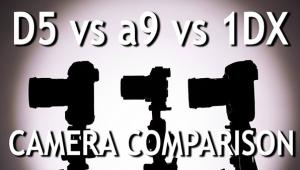Substantially improved. Easy to use even for beginners. - Casa Sandoval
Sony’s Alpha A850; 24MP In A Full-Frame D-SLR
Much has been made of the difference in image quality between so-called full-frame and APS-C-sized sensors. There’s no doubt that full frame offers more freedom to crop and make, all things being equal, higher quality enlargements, and especially the freedom to use wide-angle lenses and have them deliver wide-angle views. In many cases pros use their full-format D-SLRs for portraits, fashion, and even stock; they see full frame as necessary to get the quality they desire and clients demand. Indeed, the full-frame sensor has become in some minds the holy grail of D-SLR photography, yet budgetary considerations have somewhat restrained that enthusiasm.
 |
 |
 |
Not that having a camera body under $2000 is cheap, but I do consider Sony’s Alpha A850 D-SLR somewhat of a breakthrough in terms of price, it being full frame and with 24MP+ resolution, yielding rather incredible 139MB 16-bit Raw files and almost 70MB 8-bit Large JPEGs. Large files have their charm, especially when big prints are the aim, but they also bring with them considerations of memory, RAM, and handling of all that data. If that’s not a hurdle, there’s other technology in this camera that you might find as interesting and appealing as those large files, functions that may change the way you relate to exposure overall, and in particular dynamic range and the current HDR fad.
First, some specs and build comments. The test camera came to me with a Zeiss Vario-Sonnar 24-70mm f/2.8 lens (about $1600), the combination of which is not what I’d call light (1 lb, 14 oz for the camera sans battery and lens) but is what I’d call substantial. The controls are very simple to master and all routes are well marked. A large dial on the top left offers Program, Aperture- and Shutter-Priority, Manual, and three “bank” settings, where you register setups that can have quite a number of variables for various lighting or shooting conditions. Happily there are no Scene modes, the only concession to snapshooting being a green Auto option. There’s no built-in flash, although there are wireless setups available as part of the system, which I was not sent as part of the test.
 |
|
|
A dial with the Autoexposure Lock button in the center allows for choice of pattern, center-weighted averaging, or spot metering options, while commonly used controls such as exposure compensation, drive (where you access bracketing controls—more on those shortly), white balance, and ISO can be found as small buttons atop the camera on the right. There’s a small AF selection dial on the front lower left and a Depth Of Field (DOF) image preview button (more on that later, too) on the right. There are the usual Menu and Display buttons on the back, the Menu button bringing you to the arcane and handy function controls you might set or change once or twice and then forget.
Other than that there’s the SteadyShot option switch on the back, Sony’s in camera stabilization that precludes the need to get more expensive stabilization lenses. The “C” for Custom button is a programmable one-push route to any number of items you might commonly change (ISO, white balance, etc., though I set mine at what I was most curious about, the various levels of D-Range Optimization and Drive mode) and an Fn (Function) button, which brings up the “quick” navigation screen and is a shortcut through the many options offered when you push the Menu button. So, it’s Fn for quick changes on a variety of common shooting options and Menu for bringing up the many levels and options that affect all the camera’s operations and functions.
 |
|
 |
|
|
That’s what you might call the camera interface, though I should comment that the screen itself is quite bright and readable in all sorts of light and makes choosing functions a very easy task.
The combination of the DISP button and the “C” button brings you through various playback options, including a “filmstrip”-type top display of thumbnails with the selected image large on screen, the image alone, the image with superimposed data, and the image with data and histogram and blinkies.
 |
|
 |
|
 |
|
 |
|
|
- Log in or register to post comments


















































